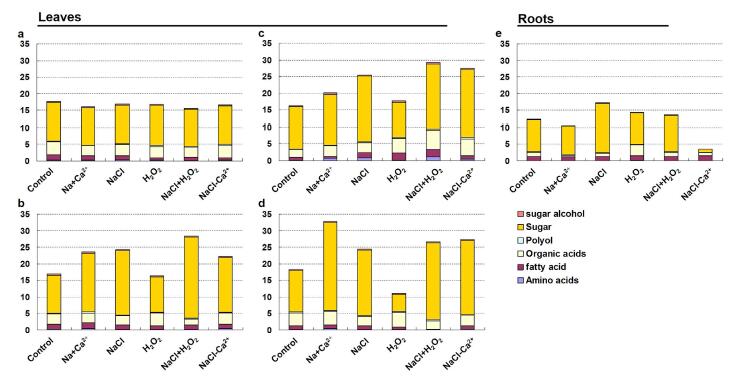Name:Jinmin Fu
Tell:
Email:jfu@wbgcas.cn
Organization: Wuhan Botanical Garden
H2O2 and Ca2+ Signals Intergrated to Enhance Grass Acclimation to Salt Stresses
2016-12-15
Previous studies have revealed that calcium (Ca2+) and hydrogen peroxide (H2O2) are vital secondary messengers in responses to salt stresses in plant. Perennial ryegrass (Lolium perenne L.) is an extensively utilized cool-season grass globally used for forage, turfgrass and soil stabilization. Little is known about the interplay between Ca2+ and H2O2 signaling in salt-stressed cool-season turfgrass.
A research team led by Prof. FU Jinmin from Wuhan Botanical Garden investigated the impact of exogenous Ca2+ or H2O2 on the secondary metabolism and oxidative signaling in perennial ryegrass under salt stress.
To understand better how Ca2+ and H2O2 signals are integrated to enhance grass acclimation to stress conditions, plants were separated into six groups with four replicates: 1) nutrient solution (control); 2)
Exogenous administration with Ca2+ alleviated the physiological damage induced by salt tress, as shown by the higher turf quality and lower (electrolyteleakage) EL, (malondialdehyde) MDA and H2O2 content, which confirmed that Ca2+treatment significantly improved the physiological response of stressed plants. External Ca2+ application significantly induced higher K+/ Na+ ratio in roots at 8 days treatment leaves. However, a higher Ca2+/ Mg2+ ratio was observed in leaf and root than NaCl-stressed tissues. Ca2+ application under salinity inhibited the decrease of enzyme activity, and greater superoxide dismutase (SOD), peroxidase (POD), catalase (CAT) and ascorbate peroxidase (APX) activity could be obtained when exogenous application of Ca2+ in NaCl solution, which were further confirmed by greatergene transcript abundanceiso enzymes intensity of SOD (3–5), POD (2–5), CAT (1-2), APX (1-5).
Ca2+ and H2O2 signals had one common regulation pattern to maintain ROS homeostasis in salt-stressed cool-season turfgrass. In addition, the metabolic profiles revealed that sugars and sugar alcohol accounted for 49.5-88.2% of all metabolites accumulation in all treated leaves and roots. However, the accumulation of these sugars and sugar alcohols displayed opposing trends between Ca2+ and H2O2 application in salt-stressed plants. Here, H2O2/ Ca2+-mediated metabolites detected could provide a dataset of common regulatory factors for signaling transduction and salinity acclimation in cool-season turfgrass.
Results have been published in Scientific Reports entitled “H2O2and Ca2+-based signaling and associated ion accumulation, antioxidant systems and secondary metabolism orchestrate the response to NaCl stress in perennial ryeg”.
This research was supported by the China-Africa Center for Research and Education, CAS and National Natural Science Foundation of China .

Histochemical analysis for the generation of Ca2+, H2O2 and O2- in perennial ryegrass roots (Image by FU’s group)

Evaluation of metabolite targets accumulation signatures in perennial ryegrass plants(Image by FU’s group)

H2O2and Ca2+ -associated gene expression is regulated in a tissue and time-specifc manner in perennial ryegrass(Image by FU’s group)